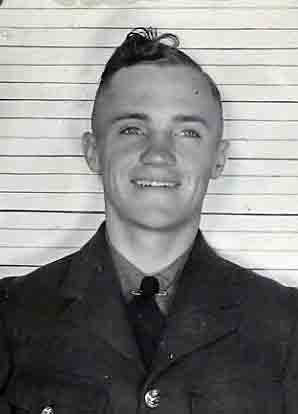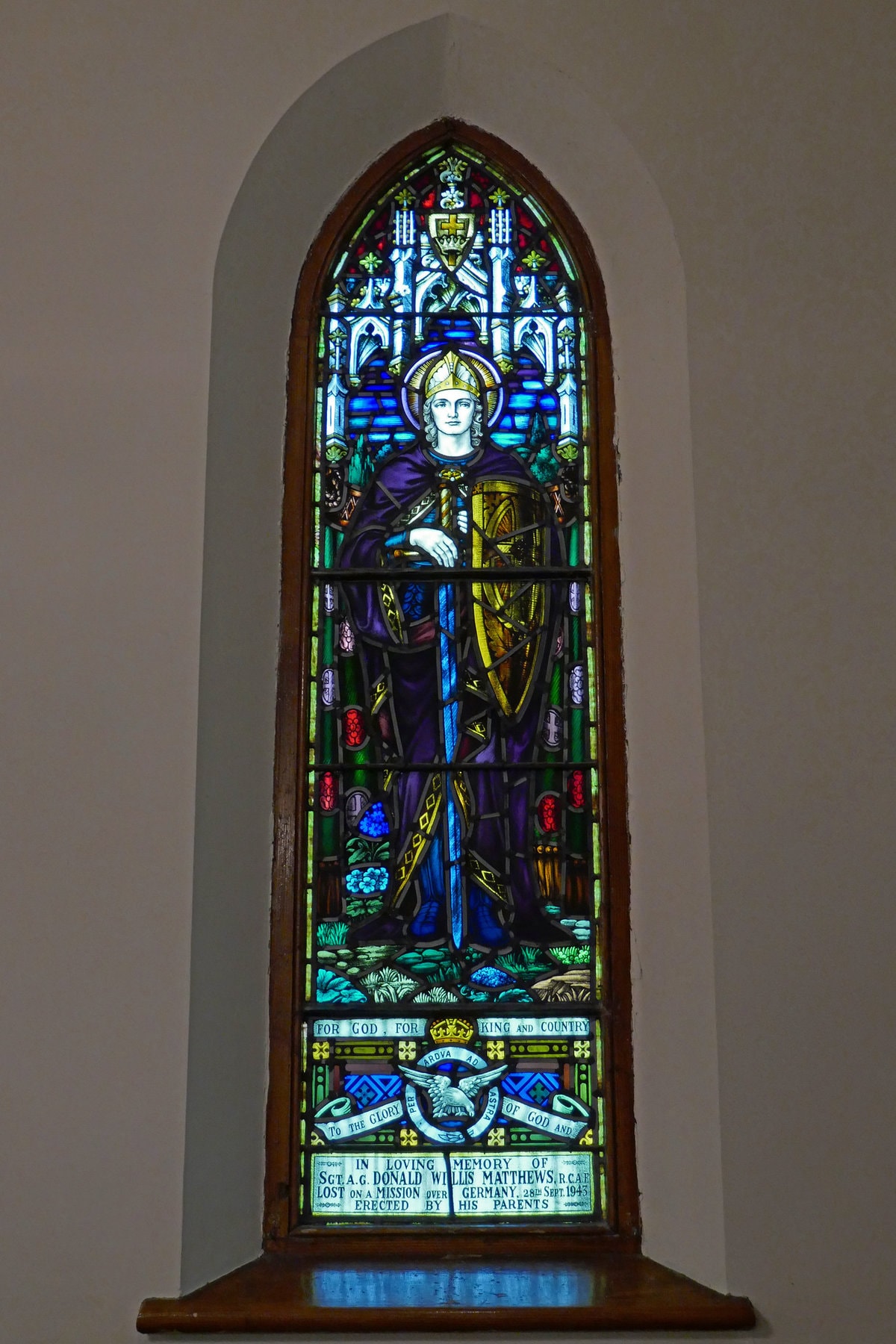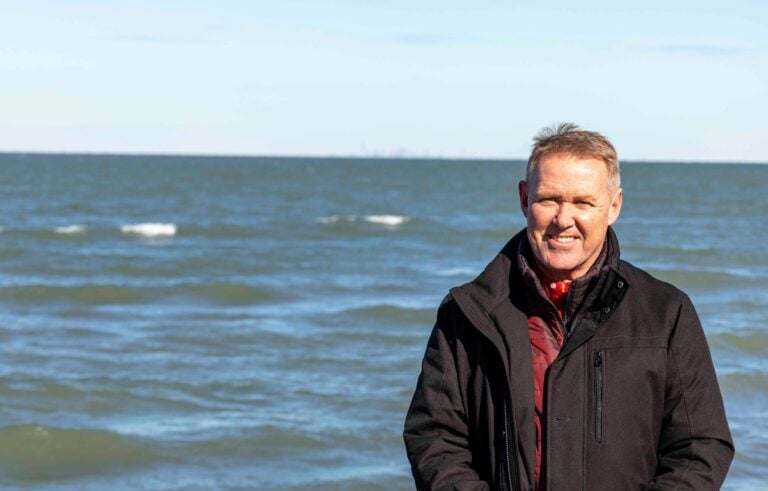In both world wars, there were men killed in action or who died in service who had a connection with Niagara-on-the-Lake but for various reasons were not commemorated on either the memorial clock tower cenotaph in Old Town or the Niagara Township war memorial in Queenston. In some cases, they lived for only a brief time in Niagara and had no family here when the monuments were built. In other instances, they had lived near McNab, not then part of NOTL or Niagara Township. While their names are not read out at the ceremonies at these monuments on Remembrance Day, they too should be remembered.
Ron Dale
Special to The Lake Report
In the now-mothballed Christ Church McNab, beautiful stained-glass windows were installed in memory of two men killed in action in the Second World War.
One was erected by the parents of James Irvine (featured in our Sept. 7 edition) and the other by the parents of Donald Matthews.
Born in Brant County on Nov. 23, 1919, Donald Willis Matthews was the son of Hartley Willis and Mary Jane “Jean” Patterson.
They farmed a few different areas, including Ridgeway, before settling in Louth Township, near McNab, which is now part of Niagara-on-the-Lake. They had two daughters and Don, their youngest child.
He attended SS#1 Grantham school from 1925 to 1933 and worked on his father’s farm after completing Grade 8 in 1933, fully expecting to one day inherit the family holdings.
Matthews was an active young man, playing baseball and lacrosse. He was fascinated by the stories of the Indigenous people who once lived in the area and continued to collect arrowheads found each year when the fields were ploughed.
The Second World War had been raging for almost two years and Canada had just suffered the tragic defeat at Dieppe in August 1942 when Matthews decided to enlist. He was accepted into the Royal Canadian Air Force on Sept. 30, 1942, and his training began immediately.
Over the next seven months he was drilled in the discipline and bearing of an airman, attended Initial Training School and Elementary Flight Training School before being chosen to attend the Air Gunner School, all part of the Air Commonwealth Training Plan.
From April 5 to June 25, 1943, he trained at the Air Gunner School and was an apt student, scoring high marks in accurately firing the type of machine-guns used on bomber aircraft.
He was assessed as an “above average student” who was “keen on his work.” On completion of the course, he was ready for active service and was promoted to sergeant.
On July 16, Matthews boarded a ship in Halifax and arrived in the U.K. after a fast six-day voyage. In England, he spent the next six weeks undertaking additional training as a member of a bomber aircrew.
Finally, on Sept. 4, 1943, Matthews arrived at the Middleton St. George airbase in County Durham, home of the 428 “Ghost” Squadron of the RCAF, flying Halifax bombers on night missions.
By 1943, the Germans had developed a long-range radar known as “Freya” that would warn them well in advance of approaching bombers, enabling them to determine their flight paths.
Heavily armed night fighter aircraft mounting accurate short-range radar known as “Lichtenstein” were vectored to intercept. The fighters could then fly behind the bomber stream and shoot the bombers down with concentrated cannon fire.
At dusk on Sept. 27 the bombers of 428 Squadron took off, heading toward their target at Hannover, Germany.
The squadron was tracked by Freya radar and Lt. Josef Kraft of the German Luftwaffe, flying a Bf 110, picked up Matthews’ Halifax bomber on his Lichtenstein radar.
While the top speed of the Halifax was 454 km/h, the Bf 110 could fly at 595 km/h. The rear gun turret of the Halifax had four machine-guns firing .303-inch (7.69 mm) bullets, but the Bf 110 had two 30-mm cannons and four 20-mm cannons that fire exploding shells.
The Halifax didn’t stand a chance once Kraft was on its tail, even though Matthews was a well-trained and accurate air gunner.
Kraft was a skilled ace and during the war he shot down 54 other Allied planes.
Matthews’ Halifax crashed into a potassium pit at Kalischacht, just southwest of Hannover. The entire crew was killed.
The resulting explosion and fire made it impossible to identify the individual remains, so the men were buried in a mass grave in nearby Ronnenberg.
After the war, the remains were transferred to another mass grave in the British Military Cemetery in Hannover.
Today, Sergeant Matthews is remembered on the stained-glass window at Christ Church, the fate of which remains up in the air. Hopefully steps will be taken to ensure that it is preserved and that Matthews will be remembered.
- On the heels of The Lake Report’s 53-part “Monuments Men” series, which exhaustively documented the story of every soldier commemorated on the town’s two cenotaphs, Ron Dale’s “Missing in Action” stories profile Niagara-on-the-Lake soldiers who died in wartime but are not listed on the town’s monuments.











